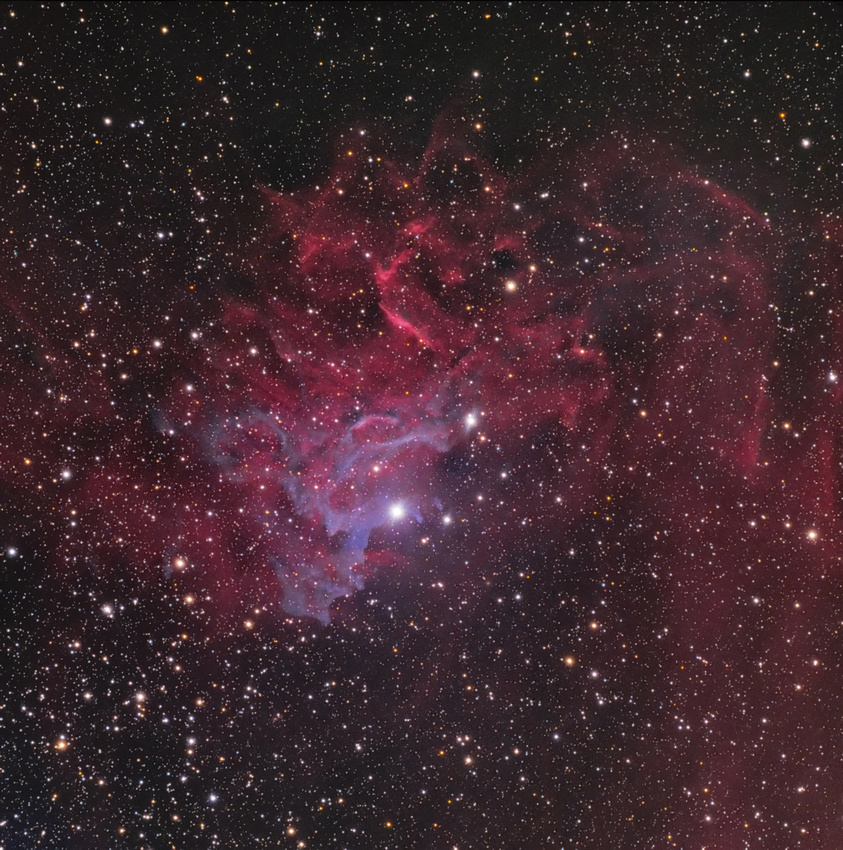Auriga (Brahm Mandal)
Auriga, resembles the shape of a charioteer, when stars in this constellation are imaginarily connected, as per Greek mythology!
Where should I see…Perseus, is the constellation which is towards west of Auriga constellation.

If you move your eyes towards east, you will see another
constellation named Gemini. In the North of Bootes, Lynx and Camelopardalis and in South, Taurus. The star Elnath, is also part of a constellation named Taurus, which is towards South of Auriga constellation. Auriga is halfway between celestial equator and North Pole, and so is fully part of Northern Hemisphere.
It covers up 657 square degree area of the sky. Area wise it is 21st largest constellation in the sky.
When and What can I see…We can gaze at this beautiful princess shape of a charioteer

constellation from August to April, as seen from India.
All you need is your naked eyes other than clear skies to see 159 stars of this constellations, as they are the one which are brighter than the lower limit of our naked eyes (i.e. 6.5 apparent magnitude) to see faintest stars.. The brightest star of this constellation is Capella. The Hindu name is Brahm Hriday.
Constellations are made up of single, binary (apparent and absolute), multiple and variable stars.
Out of total 159 stars of different types, here is the list of 20 brightest stars as per their nature:
| Binary / Multiple Star system | Variable Stars | Binary / Multiple and Variable Stars | Single stars |
| Elnath | Hassaleh | Capella | 4 |
| 4 | Haedus | Menkalinan | – |
| – | Saclateni | Mahasim | – |
| – | 3 | Almaaz | – |
| 1 | |||
| 5 | 6 | 5 | 4 |
In Hindu mythology, it is said that when Rishis and Philosophers first saw Brahm Mandal taramandal (Auriga constellation) which is named  as Brahm Mandal by them, actually looked like a shape of a charioteer. Actually, there are many stories associated with Brahm Mandal. But one of them is that, Brahm Mandal is associated with Arun who was a charioteer of Lord Sun’s chariot with 7 horses.
as Brahm Mandal by them, actually looked like a shape of a charioteer. Actually, there are many stories associated with Brahm Mandal. But one of them is that, Brahm Mandal is associated with Arun who was a charioteer of Lord Sun’s chariot with 7 horses.
Deep Sky Objects…
 IC 410 || Emission Nebula
IC 410 || Emission Nebula
 IC 405 || Flaming Star Nebula || Emission and Reflection Nebula
IC 405 || Flaming Star Nebula || Emission and Reflection Nebula
 M36 or NGC 1960 || Open Cluster
M36 or NGC 1960 || Open ClusterAll the stars that we see naked eyes, all belong to our own, Milky way galaxy (Akash Ganga Tara Vishv). Bright stars can be seen naked eye and faint one through telescope. But the curtain of sky that we see in 2D is actually a huge universe we are talking about, with 3 dimension. There are many nebulous objects visible in every constellations. They differ widely by distances and nature. Like Emission Nebula, Reflecting Nebula, Absorption Nebula, Star Birth Nebula, Supernova Remnants (SNR) and Open Stars cluster which are within the disk of our own Milky Way galaxy. Globular cluster are also found, which are in the halo of our galaxy and some most distant objects like galaxies are also visible through telescope. Such objects are defined as “Deep Sky Objects”.
In this constellation there are 37 such different types of Deep Sky Objects observed.
Below is the list of 20 brightest Deep Sky Objects:
 M37 or NGC 2099 || Richest & brightest Open Cluster
M37 or NGC 2099 || Richest & brightest Open Cluster
 M38 or NGC 1912 || Open Star Cluster
M38 or NGC 1912 || Open Star Cluster| Galaxy | Open Cluster | Globular Cluster | Nebula | Supernova Remnant | |
| Naked eye visibility | – | M36 | – | – | – |
| – | M37 | – | – | – | |
| – | M38 | – | – | – | |
| – | 1 | – | – | – | |
| Visible through Telescope | 2 | 8 | – | Flaming Star Nebula | – |
| – | – | 4 | – | ||
| 2 | 12 | – | 5 | – |


